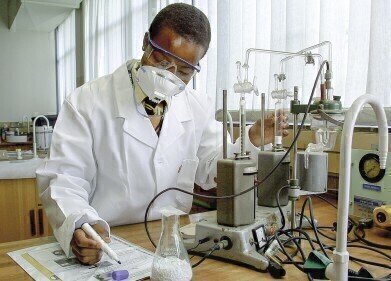Help Desk
How Does Soil Warming Affect the Environment? Chromatography Investigates
Jul 02 2021
Global warming and climate change are major concerns for soil. As soil moisture continues to decline, the need for agricultural irrigation increases with smaller yields and desertification as the main threat. But is it a two-way stream? In this post, we’ll explore how soil warming affects the environment.
Soil warming and the environment
Soil is the world’s second-largest natural carbon sink, falling behind the world’s oceans. Most of the carbon stored in Earth’s soil is located in topsoil, especially the top 30 cm of soil. The soil is an even better carbon sink than forests, which are depleted every day by logging and deforestation.
For many, soil might seem like it’s unimportant, but the dirty brown stuff is responsible for crop growth and food production worldwide. With kilometres of soil disappearing every year and coastlines shrinking rapidly, soil loss is a major problem for farmers and agricultural communities.
With soil warming comes the loss of soil moisture, which causes drier, less fertile soil and contributes to soil loss. However, in certain regions of the world, climate change leads to changes in rainfall patterns and so contributes to wetter soil. Soil that is too boggy leads to further agricultural problems and increases soil erosion.
Soil warming is harmful to the environment because it contributes to desertification, food shortages, and coastal erosion. It also impacts plant life and deforestation, as well as wildlife and crucial habitats.
Chromatography study digs deeper
Soong et al. investigated whether deep soils (those found further than 20cm below the surface) are vulnerable to climate change too. The team were also keen to find out how vulnerable deep soil is to soil warming.
Amongst other analysis, researchers measured CO2 concentrations using syringe injection via gas chromatography to investigate the effect of soil warming on deep soils in a patch of conifer forest. The troubleshooting of gas chromatography is discussed in the article, ‘Gas Chromatography Troubleshooting Part 2 - Baseline & Response Issues’.
The study discovered that large amounts of subsoil were lost in warmed conifer forests, which has a direct implication on the trees in that area. Lost subsoil affects tree roots and could cause the death of trees or failure to germinate in seeds. Also, if the subsoil is being lost, carbon is being released back into the atmosphere and impacting climate change further.
The team found at least four potential explanations for the significant loss of soil organic carbon (SOC), including microbial decomposition, increasing due to soil warming and increased concentrations of dissolved organic carbon (DOC) in the soil pore water after rain or snowmelt.
Other reasons include a much higher proportion of microbial biomass to SOC in the subsoil, which comes with increased warming due to increased microbial activity, and more chemically complex subsoil carbon has a higher temperature sensitivity and a higher activation energy.
Events
May 11 2025 Vienna, Austria
May 18 2025 Tempe. AZ, USA
May 21 2025 Birmingham, UK
Jun 01 2025 Baltimore, MD, USA
Jun 15 2025 Bruges, Belgium














